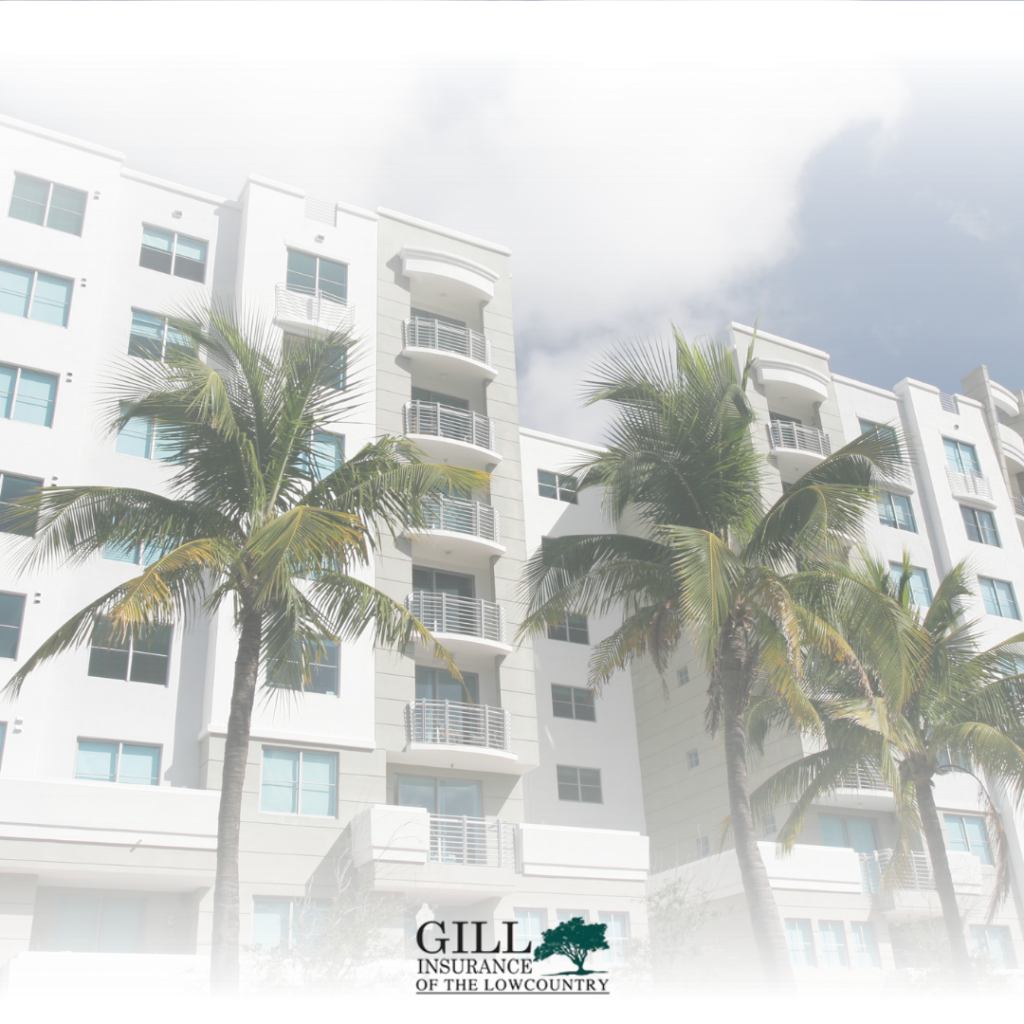
Purchasing or renting out a condo in the scenic Lowcountry can be both personally rewarding and financially lucrative. But before you sign on the dotted line, it’s essential to understand how condo insurance protects your investment and peace of mind.
We’ll walk through what condo insurance covers, key endorsements for coastal living, and special considerations for investors and vacation-rental hosts.
What Does Condo Insurance Cover?
Condo insurance (sometimes known as an HO-6 policy) is designed specifically for condo unit owners and differs from a traditional homeowner’s policy.
Typical coverages include:
Building Interior (“Walls-In”) – Fixtures, built-in cabinetry, and any interior upgrades the condominium association’s master policy doesn’t cover.
Personal Property – Furniture, electronics, clothing, and other belongings—usually up to a specified limit.
Liability Protection – Covers legal fees and damages if a guest is injured inside your unit or you accidentally damage someone else’s property.
Loss of Use (Additional Living Expenses) – Pays for temporary housing, meals, and related expenses if your condo becomes uninhabitable due to a covered peril.
Lowcountry-Specific Endorsements and Considerations
Living or investing in the Lowcountry means unique weather and environmental risks.
Talk with your agent about adding:
Wind-and-Hail Coverage – Often excluded or limited in coastal areas, so you may need a special endorsement or separate windstorm policy.
Flood Insurance – Standard condo policies do not cover flood damage. If your unit is in a FEMA flood zone—or even if it isn’t—consider purchasing a separate National Flood Insurance Program (NFIP) policy.
Water Backup / Sewer-Overflow – Protects against costly damage when municipal sewers back up into your unit—a surprisingly common issue in low-lying coastal regions.
Extended Replacement Cost – Provides coverage beyond your policy limits if rebuilding costs rise due to labor and material shortages, common after hurricanes or storms.
Buying a Condo as an Investment or Vacation Property
When purchasing for rental income or seasonal use, you’ll want to:
Verify Master Policy Gaps – Review the condominium association’s master policy to understand what structure and liability coverages it includes—and what gaps you must fill.
Adjust Liability Limits – For short-term rentals (e.g., Airbnb or VRBO), higher liability limits (e.g., $500,000 or more) and a “vacation rental endorsement” can protect you if a guest is injured on your property.
Consider Business-Use Coverage – Some insurers treat short-term rentals as a business. You may need a dwelling-fire or landlord policy rather than—or in addition to—an HO-6 policy.
Audit Your Property Value Regularly – Update your coverage limits based on current renovation costs and
local building rates, especially after coastal storms raise labor and material prices.
Renting Out Your Existing Condo: Special Tips
If you already own and plan to rent:
Screen Tenants for Liability – Require renters’ insurance—even if you’re the property owner. A tenant’s policy can cover their personal belongings and additional liability.
Document Property Condition – Before each lease, take photos or video to compare against move-out
condition and streamline any damage claims.
Maintain Proof of Loss – In the event of water intrusion, mold, or storm damage, document all communication with your association and insurer to support any claims.
At Gill Insurance of the Lowcountry, we understand the unique challenges of coastal condo ownership and rentals. Protect your Lowcountry condo and your investment with confidence. Contact Gill Insurance today for a comprehensive coverage review—and rest easy knowing your property, your tenants, and your future are in capable hands.
